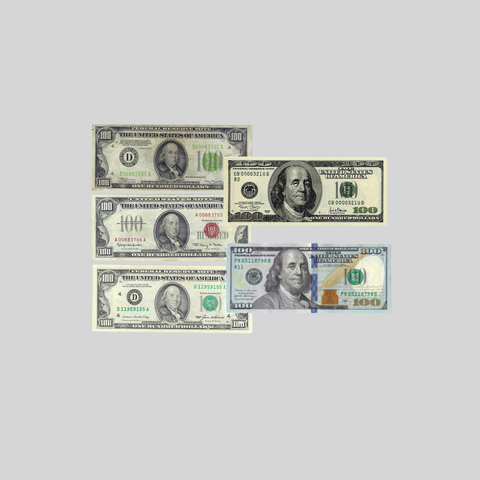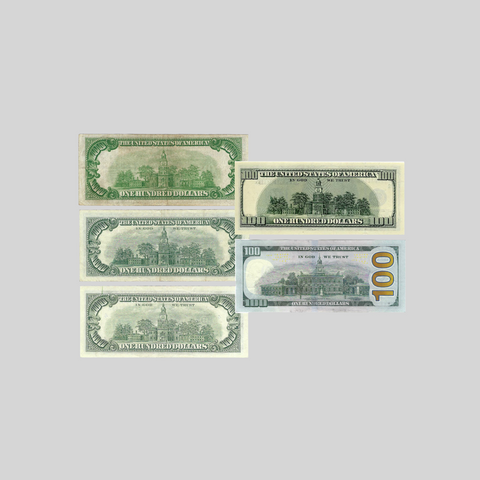

OLEVIAN NUMISMATIC RARITIES
Evolution of the $100 Bill
Brand: Olevian Numismatic Rarities (ONR), headquartered in Pittsburgh, was founded by Dane Olevian in 2012. His passion for numismatics started at age 6 when he began acquiring vintage U.S. coins from his uncle. With an entrepreneurial spirit and two decades of building relationships with numismatic collectors, mentors and experts, Dane launch ONR. Today, Dane is a life member of ANA, FUN and the PAN and has lead ONR to be one of the most influential companies ranked by Coin World while also continuing to practice medicine.
Product: The $100 dollar bill is the largest denomination of U.S. banknote produced since 1945. This 5-piece set features one example of every major design of $100 note issued from 1934 to present. It includes the first small-size $100 Federal Reserve Note to bear a green Treasury seal, the only red seal legal tender $100 note (issued in 1966), as well as 3 subsequent design modifications of the Federal Reserve Note issued through the present day. Your product is guaranteed to be genuine and will match the quality of the notes shown. Each note will be housed in an archival-quality plastic sleeve and the set will be presented in a luxurious black velvet bag with certificate of authenticity. United States Notes, also known as Legal Tender Notes, were a form of U.S. paper money issued from 1862 to 1971. Having been produced for 109 years, they were the longest running form of paper money in U.S. history. They were authorized as a form of fiat currency by the first Legal Tender Act. United States Notes acquired the name Legal Tender Notes due to the obligation that appeared on the reverse of the notes during the 1860’s, which read: “This Note is a Legal Tender for All Debts Public and Private Except Duties On Imports And Interest On The Public Debt; And Is Redeemable In Payment Of All Loans Made To The United States.” Legal tender notes were originally placed in circulation by the U.S. Treasury to pay expenses incurred by the Union during the Civil War. During the next century, the legislation governing these notes was modified many times and numerous versions were issued by the Treasury. Prior to 1929, United States Notes were issued in a large-size format, measuring 7.4 x 3.1 inches. Given this large size, they were later referred to as “horse blankets.” Starting in 1929, the size of U.S. currency was reduced to its present dimensions, and the United States Notes appeared more similar to recent Federal Reserve Notes, with the distinction of having Treasury seals and serial numbers that were red instead of green. Although all United States Notes remain valid currency to this day, they are virtually non-existent in circulation and some command significant collectible premiums.
Shipping: Ships within 48 hours by an authorized partner
Returns: No returns accepted
